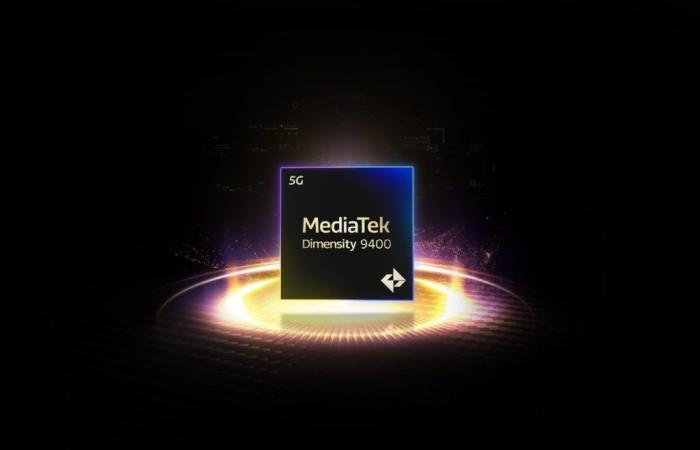On smartphones, manufacturers do not have 36 solutions to equip themselves with chips ensuring all operations under the hood. You have Qualcomm, which offers Snapdragon and which benefits from a favorable image. You have Exynos, produced and designed by Samsung and currently reserved for Korean devices. You of course have Apple and its in-house chips And you have MediaTek and its Dimensity.
Read also: Hide your disappointment, the Galaxy S24 FE has an Exynos 2400
The Taiwanese giant is often looked down upon by purists, for two main reasons:
- In the past, some chips have had a reputation for overheating;
- Until 2021, it had no competitive high-end chip, leaving the field open to Qualcomm, almost in a monopoly position with its Snapdragons.
But since 2021 and the introduction of its Dimensity 9000 series, MediaTek has been able to skillfully get back on track. “We were seven years late to the 4G generation, so rather than chasing Qualcomm, we took advantage of the arrival of 5G to start completely from scratch. We took this as an opportunity”details Rob Moffat, director of sales and business development for Europe.
Chinese brands follow, others still sulk
The machine seems broken in. Each Dimensity chip in the 9000 family is in direct competition, in terms of performance, with the leader Qualcomm and its Snapdragons. In 2021, the Dimensity 9000 is the first to integrate a core that exceeds 3 GHz. In 2022, WiFi 7 arrives at MediaTek, a little before Qualcomm also seizes it, with the Dimensity 9200.
2023 marked a significant change with a shift towards so-called architecture « All big core »implied, with a chip not including any core specialized in small, energy-efficient tasks, and relying entirely on the most powerful cores offered by ARM.
Now is the time to present MediaTek’s new high-end chip, the Dimensity 9400. For the record, it will be at the heart of theOppo Find X8 Prothe brand sent a representative to confirm it and announce the global launch of its flagship. This looks good for a return to France in this segment.
Before diving into the details of the chip, let us point out that 2024 undoubtedly marks a turning point for MediaTek which, as we have said, is unable to establish itself at the high end. And its main problem has a well-known name: Samsung. The brand claims to hold 50% market share in the premium segment outside of Samsung. But if we take Korean into account, this figure collapses… This shows the weight of the former world number 1.
A hope was finally kindled. In September 2024, Samsung announced two new high-end tablets, the Tab S10 Plus and S10 Ultra. And both models, sold for more than 1000 euros, integrate the Dimensity 9300+ chip. Let’s move on to his successor.
Dimensity 9400: new high-performance core, 3nm and 8th generation NPU
So what’s new with this Dimensity 9400? This is the first chip from the Taiwanese to pass the 3 nm barrier and what’s more, using the 2nd generation of the process from TSMC, its official founder. This simple allows the SoC to claim a theoretical gain of 40% in energy efficiency.
Among its 29.1 billion transistors, we find a 1 + 3 + 4 structure, that is to say a very high performance core (Cortex X925), three for still performance (Cortex X4) and four others more modest for classic tasks (Cortex A720). MediaTek promises a gain on Geekbench, for example, of 35% in single-core and 28% in multi-core.
The graphics part is provided by a 12-core ARM Immortalis G925 GPU. This integrates two interesting technologies: one called “Frame rate converter” capable of stabilizing the refresh rate in game, and the other ARM Super Resolution (ASR) supposed to offerupscaling. All this would still result in a 44% gain in energy efficiency, while negotiating a 41% higher performance peak please.
As since the end of 2022, generative AI has become a big issue, the chip could not do without announcements in this area. It therefore integrates the 8th generation NPU 890 from MediaTek. The gain compared to the previous generation is significant: 80% according to the brand. Multimodal management by the device is promised at a speed of 50 tokens per second.
But not all AI miracles will be managed by the NPU. The photo and video part in particular is based on a new ISP, the chip specialized in image capture. Without going into too much detail, it now manages HDR zoom and AI super zoom functions, which should once again improve the magnification capabilities of smartphones without resorting to telephoto lenses with ever-increasing focal lengths. Also in video, the chip is supposed to better manage the transition from one photo module to another.
Let’s end with an anecdotal, but rather amusing, point. If you missed it, Huawei released the first commercial smartphone with three parts and two hinges. No matter, the Dimensity 9400 is “trifold ready”. Do him a lot of good!
???? To not miss any news from 01net, follow us on Google News and WhatsApp.






